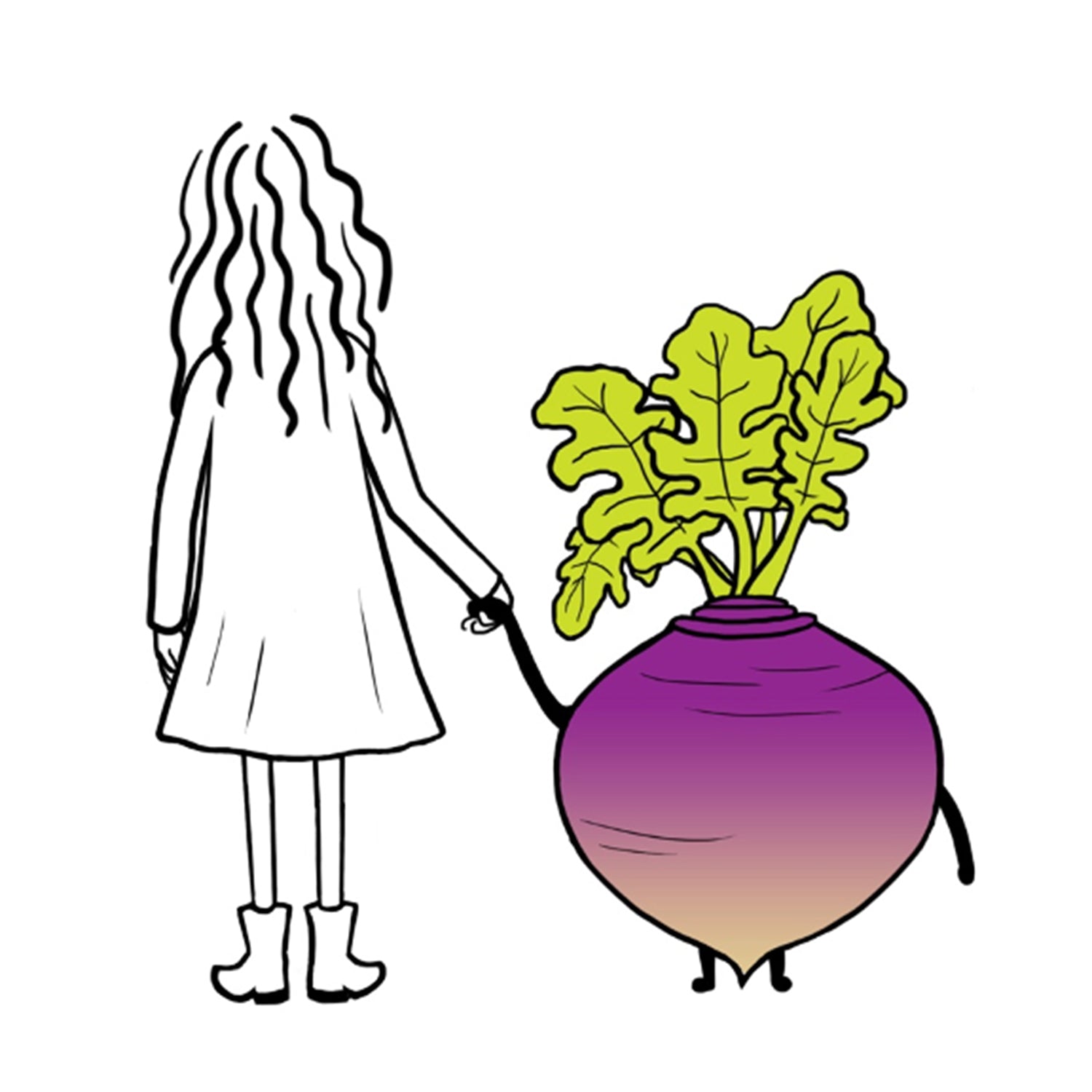Article: Lisa and Rutabaga

Lisa and Rutabaga
I just bumped into an old crush in the root vegetables section of Whole Foods. Trying to minimize my visits to the grocery store, I was on the hunt for vegetables with a longer shelf life than fresh broccoli or a head of lettuce.
As I scanned the turnips, parsnips, radishes, carrots, and kohlrabi, suddenly, to the far left, out of the corner of my eye, I caught a glimpse of my old, familiar, steadfast and always reliable crush: the rutabaga.
We hadn't crossed paths in years. They still weren't much in the looks department—kind of rotund, a little hairy—, but none of that external stuff mattered. I always loved the rutabaga for how rich and sweet they were on the inside.
I lost my breath and equilibrium when I saw them, the way you do when you have a sense memory. In the middle of Whole Foods I time traveled back decades to the avocado-green kitchen of my childhood, where the rutabaga and I first crossed paths. I was eight years old, watching my mother make chicken soup. She shared with me what she learned from her grandma, that rutabaga is the secret to a rich stock.
Her grandma, my great grandma immigrated here from eastern Europe through Ellis Island at the turn of the last century. She was a small, elegant woman with an accent, and was considered a wonderful cook and baker, so I knew I was being entrusted with something special.
It was like a rite of passage. I was privy to an age-old cultural tradition that was now my responsibility to protect and share. I watched with pride as my mother peeled the beige and purple skin of a rutabaga, chopped the butter yellow meat and added it to the boiling pot, like generations before her.
As I got older, I started playing with other ways to cook my rutabaga. I mashed, roasted, boiled, and pureed them. I learned that they are a cross between a turnip and a cabbage, and eaten raw they have a bite, but when you cook them, that’s when their buttery sweet and savory magic comes alive.
I read somewhere once that the rutabaga is like the best golden yellow potato with an attitude. When I was a nutritionist, I recommended rutabagas as a lower carb, lower calorie alternative to potatoes.
Over time we lost track of each other. No drama, no malice, just life scooping us up and taking us in different directions. Once in a while, I would read that my rutabaga was gaining popularity with followers of the trendy keto and paleo diets, or that it was the main ingredient in a gourmet dish at a fancy restaurant. Always a bit of an underdog in the vegetable kingdom, I’d smile with pride for the long overdue recognition.
It seems fitting that we crossed paths again during a pandemic, when comfort and familiarity are what everyone’s craving. It was like no time had passed. I bought enough rutabaga for the week and looked forward to revisiting our culinary adventures together. I didn’t realize how much I had missed them. In celebration of our reunion, my favorite crispy, golden rutabaga fries were on the evening's menu. This is one crush I intend to indulge, no social distancing necessary.
Is there a food you’re crushing on?
RUTABAGA FRIES
1 large rutabaga
1 tablespoon olive oil
Salt & pepper
Preheat oven to 425
Cut the rutabaga in half, vertically down the middle. Place each half on its flat side and cut each half into approx. ¼ inch thick semi-circle slices. Peel the skin off the semi-circles. Then cut the semi-circle slices into sticks or spears like french fries. You can play with the size, making them fatter or thinner.
Put the sticks in a bowl and toss with the olive oil, salt and pepper. Make sure each stick is coated with oil. Too little oil and they won’t crisp, too much and they’ll be soggy.
Place the sticks on a baking sheet lined with parchment paper or very lightly oiled or sprayed tin foil. To get a good crisp, make sure they don’t touch. You can also place a rack in a baking pan and place the fries on the rack as they will cook more evenly.
Bake for 40 minutes until golden brown and crispy, turning the fries halfway through the cooking time. You can cook longer or shorter depending on how you like them. You can also play with seasonings like granulated garlic, cumin. One of my favorites is dried rosemary.

Leave a comment
This site is protected by reCAPTCHA and the Google Privacy Policy and Terms of Service apply.